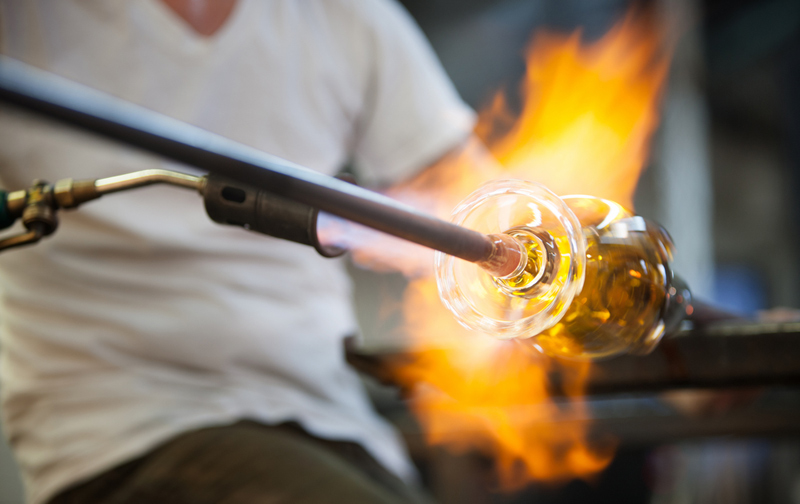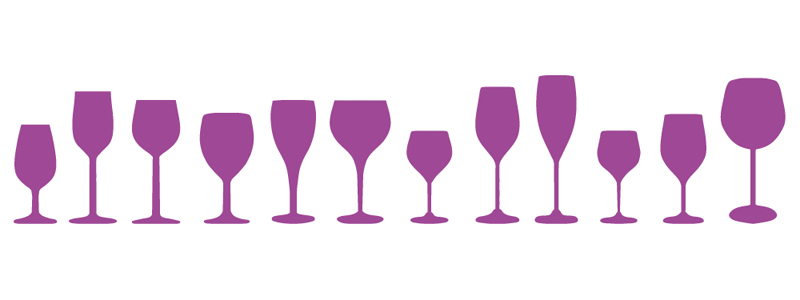If you’ve been in the market to buy new glassware recently, you’ve definitely encountered the overwhelming variety of styles and shapes from which to choose. There’s a wine glass for every style of wine you would ever want to drink–a glass specific to Bordeaux, one for Pinot Noir, another for Chardonnay and on and on.
In fact, the choices are so numerous that you’re probably wondering whether you need a wine glass for every type of wine you drink. The short and simple answer is no. While many will try and convince you that by using the perfect type of glassware for a certain type of wine you will be improving the drinking experience, we have to disagree. A glass of wine is going to taste just as good in a glass created specifically for that wine as it will in a tumbler. The wine is what matters, not the glass.
Table Of Contents
Types of Wine Glasses
So why are there so many different kinds of glassware? Marketing. In 1973, Claus Riedel of the Riedel glassware company was looking for a way to sell more wine glasses, and he came up with a novel way to do so: the Riedel Sommelier series. The initial series consisted of ten glasses of different shapes that were each said to be the ideal glassware for a certain type of wine. According to Riedel, the specific shape of the glass would aid a wine drinker in picking up every aroma of the wine, and that shape would also direct the wine to the exact part of your mouth that would allow you to taste that wine best. After releasing the glasses, sales skyrocketed.
However, in 2004, an article in Gourmet Magazine reported that studies at major research centers in Europe and the U.S. suggested that Riedel’s claims were, scientifically, nonsense. According to Linda Bartoshuk of Yale University, “Your brain doesn’t care where taste is coming from in your mouth, and researchers have known this for thirty years.” So while all of Riedel’s glasses may be beautiful, you certainly aren’t tasting a wine any better simply because you are using a Pinot Noir glass to drink Pinot Noir, instead of your standard wine glass.

So the bottom line? Save yourself the anxiety. It’s our belief that every home really just needs two sets of wine glasses: a set of sparkling wine flutes and a set of all-purpose glasses that are great for both red and white. We personally love these universal wine glasses.
No matter the glass you choose to buy, the ones that work best are ones that have stems. We love stemless wine glasses for a different look, but a wine glass with a stem is ideal for tasting and serving wine more formally. This is because the stem ensures your hand doesn’t have to touch the bulb of the glass, which would warm the wine. It also makes it much easier to swirl the wine when you initially taste it, and more fun to clink the glass for a cheers!
Is There A Correct Way To Hold A Wine Glass?
So, remember how everyone was giving Olivia Pope flack for holding her wine glass by the goblet? While we thought it was a bit silly to hold a fictional character to exacting somm standards, there is some truth behind the backlash. When you drink a glass of wine, it’s best to hold it by the stem or the base of the glass. But why?
First off, holding a glass by the stem prevents smudging, and keeps the bulb free of fingerprints. Keeping the bulb fingerprint free means you can more easily asses the wine’s color, and thereby learn things about it before ever even tasting it. For example, if there is a white wine in your glass and it seems to have a darker hue resembling the color of straw, this might be an indication the wine spent some time in oak. Examining the wine in this was is more of a practice utilized by sommeliers, but it’s fun to do every once in awhile.
The second reason the glass has a stem is that gripping the stem as opposed to the goblet makes it easier to swirl your wine. The action of swirling churns the liquid as it travels around the bulb, drawing in oxygen from the air and opening the wine up, helping it to release it’s aromas. Though it seems esoteric and a little pretentious, swirling can be the key to unlocking flavors and allowing for an appreciation of the wine’s “nose.”
Perhaps the most intuitive reason to hold the stem is that when you grip the goblet, you warm up the wine. When a wine is too hot, the alcohol evaporates at a quicker pace. As a result, some of the more complex favors are muddled with, and you may be left with a more flat tasting wine. When you hold the stem, you keep the wine at the proper temperature, and thus serve it at its best. If you want to compare the situation to serving food, imagine serving ice cream that was already halfway melted. It still tastes good, but it’s just not the same as the ice was intended to be.
Now, it’s important to note that gripping your wine glass by the stem is only relevant if your wine was served at the right temperature to start with. If your wine was ice cold, feel free to grip it by the goblet to warm it up a bit first as serving a wine too cold results in all its flavors and aromas shutting down.
Given all this, why go stemless? One reason is stemless wine glasses are more versatile, and can be used not only for wine, but for cocktails, or even juices. They’re also easier to handle and less fragile. When drinking from a stemless glass, go ahead and hold the base – how else would you drink the wine? We recommend using stemless wine glasses for more intro level, less complex wine at casual gatherings. When choosing between stem or no stem, it’s, as always, a matter of preference. The most important thing is that at the end of the night, the vino is enjoyed.
